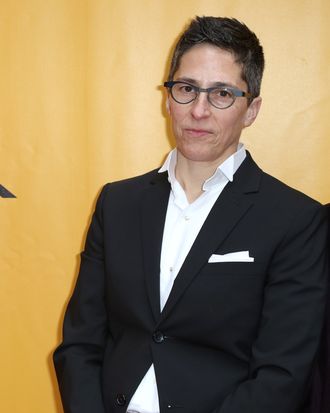
In 1985, Alison Bechdel introduced what would come to be known as the Bechdel test in her comic strip Dykes to Watch Out For. Thirty years later, it’s become a cultural touchstone, conversation-starter, and feminist rallying cry that has even been used as a ratings system in some Swedish theaters. The simple question is whether a movie features two female characters who talk to each other about something besides a man, a bar that surprisingly few films can pass. But Bechdel said she never expected it to have such staying power when we asked her about it at the Broadway opening of Fun Home, the new musical based on her celebrated graphic novel. “That, too, has been a very strange turn in my life,” she laughed. “I feel sort of funny about that whole thing because it wasn’t like I said, ‘This is the Bechdel test, and now you must follow it.’ It somehow just got attached to me. I mean, I did write down the principles in a cartoon, but this younger generation of feminists and film-watchers has adopted it in this way that I think is pretty cool.” Bechdel said the test’s enduring value lies in the discussions it provokes, but she warned not to let it stand as any sort of final judgment. “It’s not conclusive or definitive. It’s not meant as a serious metric,” she explained. “You can certainly have a feminist movie where there’s only one woman — or no women.”

